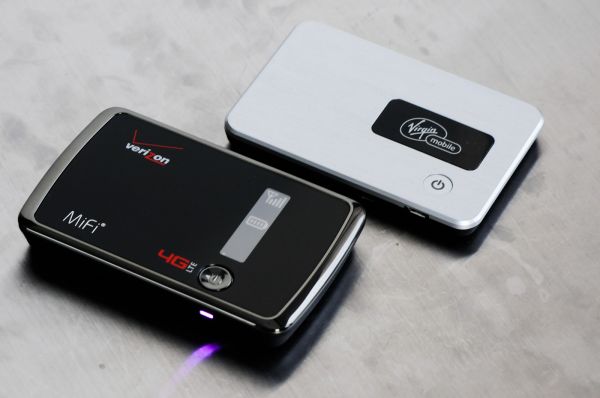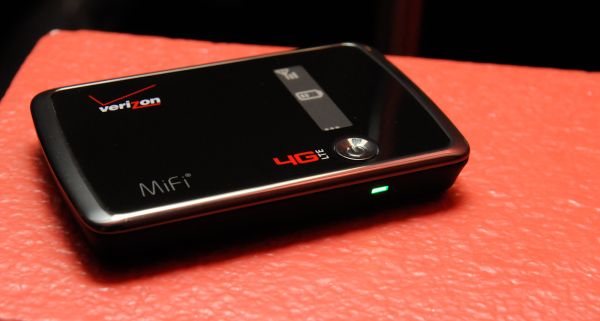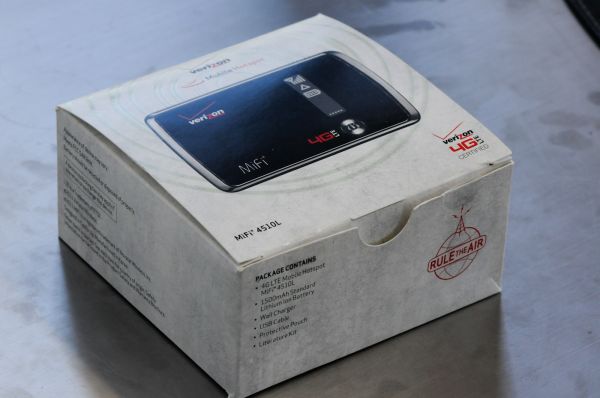Novatel Wireless MiFi 4510L Review - The Best 4G LTE WiFi Hotspot?
by Brian Klug on July 14, 2011 5:20 AM ESTIntroduction
A while back we explored almost all of Verizon’s 4G LTE network launch hardware - two USB modems, the Samsung SCH-LC11 hotspot, and the HTC Thunderbolt, to be exact. Since then, one more WiFi hotspot product has launched which we’ve been playing with for a long time, the MiFi 4510L from Novatel Wireless. The SCH-LC11 was a decent hotspot but still didn’t quite nail everything.
It’s pretty amazing to me how Novatel Wireless’ MiFi brand quickly became so synonymous with portable cellular hotspots. The MiFi 2200 is an iconic product that pops up just about everywhere and has enjoyed well-deserved, almost unchallenged success on practically every single CDMA2000 carrier in the US. For many smartphone users, using things like WMWifiRouter and other similar software tools (long before Android added its own wireless AP) that made a smartphone into a portable WiFi access point were old hat, but Novatel’s MiFi was a nicely packaged solution that was much easier to swallow. Novatel has kept the MiFi updated, but has primarily focused on versions with exclusively 3GPP (GSM/UMTS) connectivity. The deployment of Verizon’s 4G LTE network thus necessitated another update, and Novatel’s answer is the MiFi 4510L, which includes support for the carrier’s 700 MHz LTE and 1900 / 800 1x/EvDO Rev.A networks.

The LTE-enabled MiFi 4510L next to its older sibling, the MiFi 2200
I was a bit surprised to see Novatel beaten at launch time by Samsung, whose SCH-LC11 hotspot we reviewed came before the MiFi variant by a fair margin. At the time, I was satisfied with the SCH-LC11 but still looking for a few additional important things. Chief among those were 5 GHz 802.11a/n support, ability to change between using the device as a modem or charge when connected over USB, GPS support, and more customization options inside the web control pages.
Unfortunately the MiFi 4510L doesn’t really bring anything different on those fronts, and as we’ll see in a moment actually is based around the exact same combination of MDM9600 baseband and WCN1312 WLAN with no discrete applications processor.
First things first, and that’s how the MiFi 4510L compares physically to its predecessor, and the SCH-LC11. Unfortunately, the SCH-LC11 had to go back to Verizon before the MiFi 4510L came, so I don’t have any side by side shots with that device, however the table below tells the story of how the two compare when it comes to size and weight.
| Portable Hotspot Comparison | |||||||
| Novatel Wireless MiFi 2200 | Samsung SCH-LC11 | Novatel Wireless MiFi4510L | |||||
| Height | 59 mm (2.32") | 59 mm (2.32") | 60 mm (2.36") | ||||
| Width | 89 mm (3.50") | 90 mm (3.54") | 95 mm (3.74") | ||||
| Depth | 8.8 mm (0.35") | 11 mm (0.43") | 13 mm (0.53") | ||||
| Weight | 59 g (2.08 oz) | 81.5 g (2.87 oz) | 88.6 g (3.13 oz) | ||||
| Network Support | 800 / 1900 (1x/EvDO Rev.A/0) | 700 MHz (LTE), 800 / 1900 (1x/EvDO Rev.A/0) | 700 MHz (LTE), 800 / 1900 (1x/EvDO Rev.A/0) | ||||
| Battery Size | Removable 4.25 Whr | Removable 5.55 Whr | Removable 5.6 Whr | ||||
It’s clear to me that the original MiFi 2200 is still the form factor to beat, leading both in overall package volume, and weight. The move to LTE has necessitated both a PCB that spans the entire length of the board, and a larger battery, and that definitely shows.













24 Comments
View All Comments
quiksilvr - Thursday, July 14, 2011 - link
Wouldn't it make sense to pay for speed instead? I guess the LTE network needs to be more widespread in order for this to work, but it just seems like a sick joke. Oh here's 10 Mbp/s, enjoy it for an hour a month!>:(
Brian Klug - Thursday, July 14, 2011 - link
That's actually *exactly* what AT&T's plans for LTE are. Part of their plan will involve QoS enforced speed tiers just like any other ISP. That was part of what was leaked a while back, you can see for yourself here: http://twitpic.com/5q42gxAlso speeds will be between 8-12 Mbps on AT&T's 700 / 1700 / 2100 MHz LTE deployment.
zanon - Thursday, July 14, 2011 - link
Of course it makes sense, on every network. Bandwidth caps and QoS tiers are what all connections should be, it's what actually is limited. Datacaps exist because it makes it easier to both milk people for more money, and to limit disruption to outdated existing technologies. Given the control concentrated into so few hands however it's very hard to see anyway to get this situation fixed.mlosee222 - Thursday, July 14, 2011 - link
Good review, you are spot on about the lack of configuration options in the web front end. My device is never further than arm's length and it would be great to turn down the wifi power. I actually learned how to write an android app specifically so I could keep track of my data usage and view connection stats on my phone without being logged in the browser interface. Its functional but the GUI is about as pretty as a linux shell.I don't have LTE in my area yet, although I got to use it a little bit in Vegas. In my experience the 45010L had trouble switching between 3G/4G and required a reboot to get the signal back. I did about five speed tests in Vegas; never broke 5mb and latency was never below 100ms.
LTE just went live in Salt Lake and my area *should* be getting it soon. The last couple weeks I've periodically seen phantom LTE signals with good stats (-60 dbm, 8 snr) but am so far unable to connect. I'm not sure if its a real signal or if the device is lying to me.
I actually use the 4510L exclusively for the data plan on my Nexus S. I don't mind carrying another device in my pocket since I get a data connection that actually works reliably. In my opinion, its a good idea to decouple the data connection from the phone. Tethering a PC is mandatory for my workload and I don't like the red tape carriers put in the way of using phones as a hotspot. That, and its nice to get LTE with a phone that has only an HSDPA antenna.
Overall I'm satisfied with the 4510L. I haven't really experienced LTE yet, although I'm tickled pink with the 3G connection alone. Then again, I'm just happy to get away from the stone-age, overloaded TMobile towers.
jrs77 - Thursday, July 14, 2011 - link
http://www.huaweidevice.com/worldwide/productFamil...The Huawei E5830 has all you want. It supports all bands, has a neat web-interface to configure it, has no sim-lock and supports USB-storage. Oh... and it's dirt-cheap for $80 and can connect up to 5 clients simulatanously.
dreddly - Thursday, July 14, 2011 - link
cool. this sounds like what I need. Our LTE is missing in CanadaBrian Klug - Thursday, July 14, 2011 - link
Maybe next we will check out one of these, I carry around a couple of Huawei modems for personal use that I've never really reviewed or anything. Their Mobile WiFi lineup seems to be gaining a lot of traction lately.-Brian
ggathagan - Friday, July 15, 2011 - link
But it doesn't list as a 4G/LTE deviceyelped - Thursday, July 14, 2011 - link
Sorry for being off-topic, but what's up with Anand's Evo 3D review? The self-evident answer is that he seems pretty busy lately.Thanks.
Brian Klug - Thursday, July 14, 2011 - link
He's working on it, just busy ;)-Brian